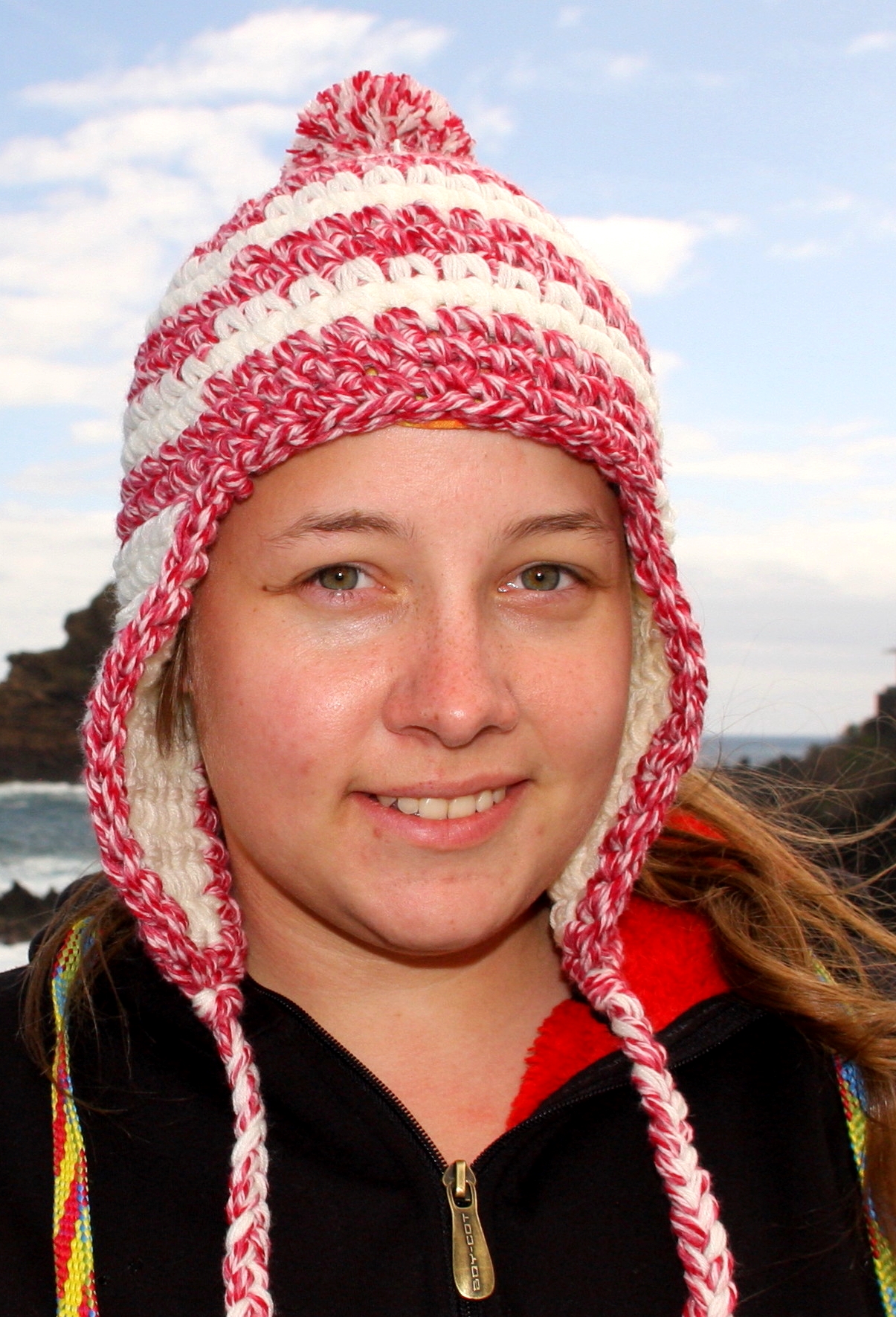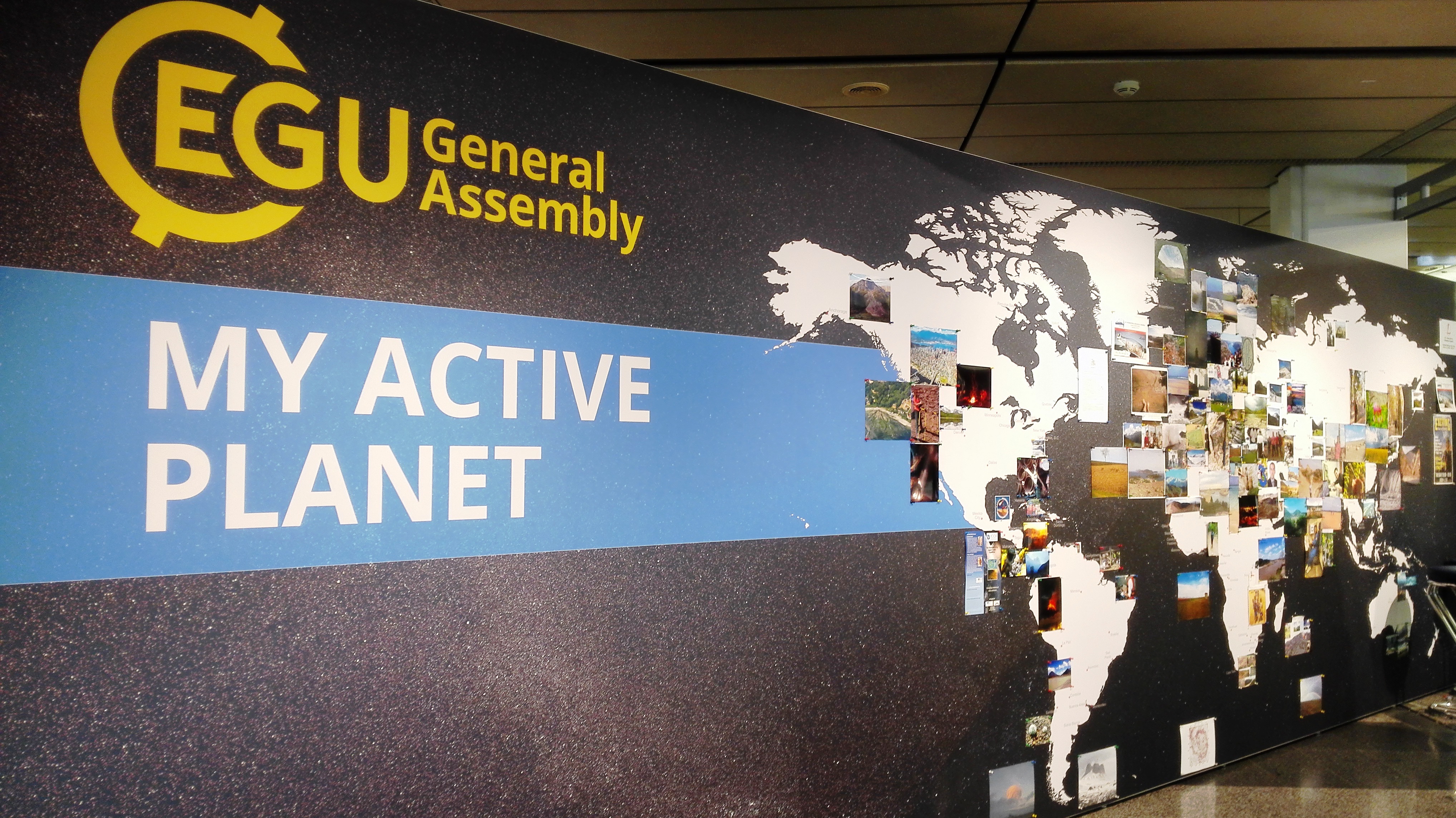
Maaperägeologian pääaineessa väitöskirjaansa tekevä Mira Tammelin kävi huhtikuussa esittelemässä tutkimustuloksiaan ja haistelemassa uusimpia geotieteiden tuulia EGU (European Geosciences Union) General Assembly 2016 -konferenssissa.
Mira Tammelin, a PhD student in Quaternary geology, went to the EGU (European Geosciences Union) General Assembly 2016 conference in April to present her newest research results and to find out the fresh winds breezing in geosciences.
EGU GENERAL ASSEMBLY 2016 – GEOSCIENCES ROCK! GEOTIEDEKUULUMISIA EGU2016-KONFERENSSISTA
Huhtikuussa lähes 14 000 geotieteilijää ympäri maailmaa kerääntyi Itävallan Wieniin vuosittaiseen EGU General Assembly -konferenssiin. Geotieteet kattavat kaiken elottoman tutkimisen maapallolla ja avaruudessa eli kivet, mineraalit, sedimentit, maannokset, meret, makeat vedet, jäätiköt ja ilmaston sekä myöskin eliöiden vuorovaikutuksen edellä mainittujen kanssa. EGU General Assembly on suurin Euroopassa järjestettävä geoalojen kokous, ja se onkin vuosikymmenten saatossa kasvanut niin merkittäväksi, että kaupungin jokainen raitiovaunukin oli koristeltu konferen
ssia mainostavalla lipulla.
Tänä vuonna konferenssin teemana oli ”Aktiivinen planeetta”. Jokainen konferenssivieras sai tuoda yhden aktiivista planeettaamme kuvastavan valokuvan, joka kiinnitettiin oikealle sijainnilleen maailmankartalla. Loppuviikosta maailmankartta olikin jo varsin täynnä kuvia, sillä osallistujia tuli 109:stä eri maasta. Lisäksi järjestettiin neljä ”Aktiivinen planeetta” -teemaluentoa, jotka kattoivat maapallon kivikehän, vesikehän, eliö- ja ilmakehän sekä Aurinkokunnan. Astronautti André Kuiperin esitys avaruudessa elämisestä ja työskentelystä oli valitettavasti jouduttu peruuttamaan viime hetkellä.

Konferenssivieraiden näkemys aktiivisesta planeetastamme.
Myös Antroposeeni eli ihmistoiminnan leimaama geologinen ajanjakso, resurssien riittävyys (tai riittämättömyys), kestävä kehitys sekä ilmastonmuutos olivat näkyvästi kokouksessa esillä. Antroposeeni-session aikana pohdittiin muun muassa sitä, miten Antroposeeni pitäisi ajanjaksona määrittää, joko elämme sitä, milloin sen voi katsoa alkaneeksi ja millaiset tulevaisuuden kehityskulut ovat mahdollisia. Äänestyksen perusteella suurin osa sessioon osallistuvista tutkijoista uskoi, että olemme eläneet Antroposeenia teollisen vallankumouksen alusta lähtien. Keskustelua herätti myös se, miten pitkälle maapallon tarjoamat resurssit riittävät, miten niitä tulisi käyttää ja miten tämä heijastuu ilmastonmuutokseen. Globaalia talouskasvua ja ilmastonmuutosta ruotivan väittelyn lopuksi yksi väittelijöistä totesi, että pelkät teknologiset innovaatiot eivät enää riitä, vaan globaaliin talouspoliittiseen järjestelmään tarvittaisiin kokonaisvaltainen muutos ongelman ratkaisemiseksi.
Suuresta koostaan huolimatta EGU General Assembly on hyvin (jatko)opiskelijaystävällinen. Tänä vuonna 53 % osallistujista oli nuoria tutkijoita. Konferenssissa onkin tyypillisesti järjestetty oma tila nuorille tutkijoille verkostoitumista varten sekä useita hyödyllisiä lyhytkursseja muun muassa opettamisesta, opiskelijoiden ohjaamisesta, artikkeleiden kirjoittamisesta ja revidoinnista, apurahojen hakemisesta ja tieteen popularisoinnista. Tämän kevään erikoisuutena oli Rhyme-your-research, jossa nuoret tutkijat saivat päästää luovuutensa valloilleen ja kirjoittaa runoja omasta tutkimuksestaan.
EGU GENERAL ASSEMBLY 2016 – GEOSCIENCES ROCK! GREETINGS FROM THE EGU2016 CONFERENCE
The EGU General Assembly 2016 conference gathered almost 14 000 geoscientists in Vienna, Austria in April. Geoscience covers the study of everything that is non-organic on Earth and in space including rocks, minerals, sediments, soils, oceans, freshwater, ice, climate as well as the interaction of living things with the aforementioned. EGU General Assembly is the largest geoscience conference in Europe and it has grown during the years to such extent that each tram of the city was decorated with an EGU flag.
This year’s conference theme was Active Planet. Each attendee was encouraged to bring a photo that was attached to a large world map. By the end of the week, the map was full of photos from all around the world as there were attendees from 109 different countries. In addition, four Active Planet theme lectures were organized that discussed solid, liquid and outer shell Earth as well as the Solar system. Unfortunately, a lecture by astronaut André Kuipers about living and working in space was cancelled.

Conference attendees’ view of our Active Planet.
Anthropocene (a geological epoch characterized by human impact), the sufficiency or insufficiency of resources, sustainable development and climate change were also in a spotlight during the conference. Questions, such as how should we define the Anthropocene, are we living it already, when did it start and what kind of futures are possible, were discussed during the Anthropocene session. Most scientists attending the session voted that we have been living the Anthropocene since the industrial revolution. Another topic was the sufficiency of different resources. Important questions were if there are enough resources for the growing population, how we should use the available resources and how will this affect the climate. One of the concluding remarks of a great debate titled ‘Is global economic growth compatible with a habitable climate?’ was that mere engineering innovations are not enough anymore. Instead, we need a complete change in the global economic policy system to solve the problem.
Despite its size, the EGU General Assembly is a (PhD) student-friendly conference. This year 53 % of the attendees were early career scientists. The conference offers an early career scientist lounge for easier networking as well as many relevant short courses about teaching, supervising students, writing and reviewing articles, finding funding and science outreach among other things. This year’s specialty was the Rhyme-your-research workshop where young scientists could get creative and write poems about their research.
